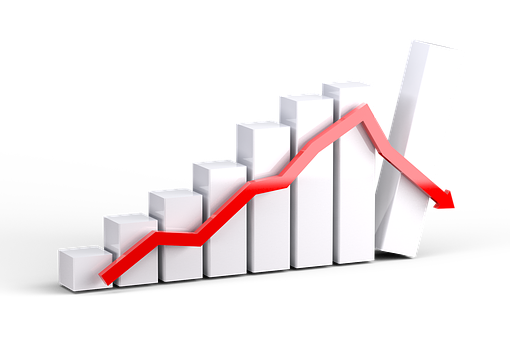Introduction for Stock Price in India –
In India, stock price refers to the price at which shares of a particular company are currently trading on a stock exchange. The two main stock exchanges in India are the National Stock Exchange (NSE) and the Bombay Stock Exchange (BSE).
The stock price of a company is determined by the supply and demand of its shares in the market. If there is more demand for a particular stock, the price will generally increase, and if there is more supply, the price will generally decrease.
Investors in India closely monitor stock prices to make informed investment decisions. They analyze a company’s financial performance, growth prospects, industry trends, and other factors to evaluate whether a stock is overvalued or undervalued.
Stock prices in India can be influenced by a variety of factors, including domestic and global economic conditions, political developments, regulatory changes, company news and announcements, and investor sentiment.
Investing in the Indian stock market can be a high-risk, high-reward proposition, and investors should conduct thorough research and analysis before investing in any particular stock. It’s also important to diversify one’s portfolio and maintain a long-term investment perspective to minimize risk and maximize returns.
How does share price increase or decrease in India?
The share price of a company in India can increase or decrease based on various factors that impact the demand and supply of the stock in the market. Some of the factors that can influence the share price are:
- Company performance: The financial performance of the company, including revenue growth, profitability, and future growth prospects, can have a significant impact on the share price.
- Market sentiment: The overall sentiment of the stock market, investor confidence, and macroeconomic factors can affect the demand and supply of stocks and, consequently, the share price.
- Industry trends: The performance of the industry in which the company operates, including the competitive landscape and regulatory environment, can also influence the share price.
- News and events: Significant news or events related to the company, such as mergers and acquisitions, partnerships, product launches, or legal issues, can impact the share price.
- Supply and demand: The number of shares available for trading and the number of buyers and sellers in the market can affect the share price as well. If there are more buyers than sellers, the share price will likely increase, and vice versa.
Overall, the share price of a company is determined by the market forces of supply and demand, which are influenced by various factors, as mentioned above.
How is share price calculated?
The share price of a company is calculated by dividing the total market value of the company’s outstanding shares by the number of shares outstanding. The market value of the company is the current market price of each share multiplied by the total number of outstanding shares.
Here’s the formula to calculate share price:
Share price = Market value of the company’s outstanding shares / Number of shares outstanding
For example, if a company has 1 million outstanding shares and the current market price of each share is Rs. 100, then the market value of the company’s outstanding shares would be Rs. 100 million. If we divide this market value by the number of outstanding shares, we get the share price:
Share price = Rs. 100 million / 1 million = Rs. 100
Therefore, the share price of the company would be Rs. 100 per share.
It’s important to note that the share price of a company can change constantly based on various market factors, and the calculation of the market value of a company’s outstanding shares can be affected by changes in the number of outstanding shares or fluctuations in the stock price.
What causes valid share price to decrease?
There are several factors that can cause the valid share price of a company to decrease. Here are some common reasons:
- Poor financial performance: If a company’s financial performance, including its revenue, profits, or cash flow, does not meet investors’ expectations, the share price may decline.
- Negative news or events: Significant negative news, such as a data breach, legal issues, or a negative earnings report, can cause the share price to decline as investors react to the news.
- Increased competition: If a company faces increased competition in its market, it may struggle to maintain market share, leading to lower revenues and profits, and a corresponding decline in share price.
- Economic factors: Economic factors such as a recession, inflation, or high interest rates can affect the share price of a company, as investors become more risk-averse and cautious with their investments.
- Changes in industry or regulatory environment: Changes in the regulatory environment or technological disruptions can also impact the share price of a company, especially if the company is unable to adapt to these changes.
- Internal management issues: If there are internal management issues, such as high turnover or poor leadership, this can negatively impact investor confidence and lead to a decline in the share price.
It’s important to note that many of these factors can also cause the share price to increase, depending on the circumstances. It’s essential for investors to conduct thorough research and analysis to evaluate the potential risks and rewards of investing in a particular company.
What cause valid share price increase?
There are several factors that can cause the valid share price of a company to increase. Here are some common reasons:
- Positive financial performance: If a company’s financial performance, including its revenue, profits, or cash flow, exceeds investors’ expectations, the share price may increase.
- Positive news or events: Significant positive news, such as a new product launch, a strategic partnership, or an acquisition, can cause the share price to increase as investors react to the news.
- Increased demand for the stock: If there is increased demand for a company’s stock, such as from institutional investors or individual investors, this can drive up the share price.
- Strong industry or regulatory environment: If a company operates in an industry with strong growth potential or favorable regulatory environment, this can positively impact the share price.
- External economic factors: Economic factors such as low interest rates, a strong economy, or favorable macroeconomic conditions can also positively impact the share price of a company.
- Good management practices: A strong leadership team and effective management practices can instill investor confidence and increase the share price.
It’s important to note that many of these factors can also cause the share price to decrease, depending on the circumstances. It’s essential for investors to conduct thorough research and analysis to evaluate the potential risks and rewards of investing in a particular company.
How do you identify stock manipulation?
Stock manipulation refers to illegal or unethical practices that artificially inflate or deflate the price of a stock. Here are some common ways to identify stock manipulation:
- Abnormal trading volumes: If there is unusually high trading volume for a particular stock, this could be a sign of stock manipulation. This can occur when insiders or other groups of traders collude to trade a large number of shares to create the impression of demand or supply.
- Unusual price movements: If there are sudden and large price movements in a stock that do not correspond to the company’s financial performance or industry trends, this could be a sign of manipulation.
- Insider trading: If there is a sudden increase in buying or selling activity by insiders or other connected parties, this could be a sign of insider trading, which is a form of stock manipulation.
- False information: If there is a dissemination of false or misleading information about a company or its stock, this could be a sign of manipulation. This could include rumors or fake news spread through social media or other channels.
- Pump and dump schemes: This is a type of manipulation where traders artificially inflate the price of a stock by promoting it heavily, often through misleading or fraudulent means. Once the price reaches a certain level, they sell their shares, causing the price to plummet.
It’s important to note that not all unusual market movements or trading activity are a sign of manipulation. However, if you suspect manipulation, it’s important to report it to the relevant regulatory authorities and seek professional advice before making any investment decisions.
What is a good price for a stock?
The concept of a “good price” for a stock is subjective and depends on various factors, such as the company’s financial performance, growth potential, and the current market conditions.
Generally, investors look for stocks that are undervalued, meaning they are trading below their intrinsic value or their potential future earnings. However, determining the intrinsic value of a stock can be a complex process, and there are several methods for calculating it, including discounted cash flow analysis, price-to-earnings ratio, price-to-book ratio, and dividend yield.
Investors also consider other factors, such as the company’s competitive advantage, market position, industry trends, and management team when evaluating the stock’s potential.
Ultimately, a “good price” for a stock is one that aligns with an investor’s investment objectives, risk tolerance, and overall investment strategy. It’s important to conduct thorough research and analysis before investing in any stock and to consider both the potential risks and rewards of the investment.
How do you calculate if a stock is undervalued or overvalued?
There are several methods to calculate if a stock is undervalued or overvalued. Here are a few commonly used approaches:
- Price-to-earnings (P/E) ratio: The P/E ratio is calculated by dividing the current stock price by the company’s earnings per share (EPS). A high P/E ratio may indicate that a stock is overvalued, while a low P/E ratio may suggest that a stock is undervalued. However, it’s important to compare the P/E ratio to industry peers to get a better sense of whether a stock is truly overvalued or undervalued.
- Price-to-book (P/B) ratio: The P/B ratio is calculated by dividing the current stock price by the company’s book value per share. A P/B ratio that is less than 1 may suggest that a stock is undervalued, while a ratio greater than 1 may suggest that a stock is overvalued.
- Discounted cash flow (DCF) analysis: DCF analysis estimates the present value of future cash flows generated by a company, taking into account factors such as projected revenue growth, expenses, and capital expenditures. If the present value of the cash flows is higher than the current stock price, the stock may be undervalued, while if the present value is lower than the current price, the stock may be overvalued.
- Dividend yield: Dividend yield is the ratio of a company’s annual dividend per share to its current stock price. If the dividend yield is higher than the market average, the stock may be undervalued, while if the yield is lower than average, the stock may be overvalued.
It’s important to note that these methods are not foolproof and should be used in conjunction with other analyses and research. Factors such as market conditions, industry trends, and company-specific risks should also be considered when evaluating whether a stock is undervalued or overvalued.
What does the earnings per share ratio mean?
Earnings per share (EPS) is a financial ratio that measures a company’s profitability on a per-share basis. It is calculated by dividing a company’s net income by the number of outstanding shares of common stock.
The EPS ratio gives investors and analysts insight into how much profit a company is generating per share of stock outstanding. It is an important metric used in fundamental analysis to evaluate a company’s financial performance and potential for growth.
EPS is calculated as follows:
EPS = (Net Income – Preferred Dividends) / Average Outstanding Shares
Where:
Net Income: the company’s total profit after deducting all expenses, taxes, and interest payments.
Preferred Dividends: any dividends paid to preferred stockholders, which are paid before common stock dividends.
Average Outstanding Shares: the weighted average number of common shares outstanding during the reporting period.
EPS can be reported on both a trailing basis (based on past performance) or a forward basis (based on future projections). It is important to compare a company’s EPS to its peers and industry benchmarks to determine how it is performing relative to its competitors.
In general, a higher EPS indicates better profitability and potential for growth, while a lower EPS may indicate weaker financial performance. However, EPS should not be considered in isolation, as it is just one of many factors that investors should consider when evaluating a company’s financial health and growth potential.
What is the difference between stock price and market price?
Stock price and market price are two terms that are often used interchangeably, but they actually have different meanings.
Stock price refers to the price at which a single share of a company’s stock is currently trading on a stock exchange. This price is determined by the supply and demand of the stock in the market and can fluctuate throughout the day based on a variety of factors.
Market price, on the other hand, refers to the price at which a security, such as a stock, bond, or commodity, is currently trading in the broader financial market. This price is determined by the collective supply and demand of the security in the market, rather than just the supply and demand of a single stock.
In other words, stock price is a specific price for a particular stock, while market price is a more general term that refers to the price of a security across the entire market.
It’s important to note that stock price and market price can also refer to different timeframes. Stock price typically refers to the current price of a single share, while market price can refer to the price over a specified period, such as a day, week, or month.
Critical Analysis of Stock Price in India-
As with any financial market, the stock price in India is subject to a range of factors that can impact its performance. Here are some critical analysis points to consider when evaluating the stock price in India:
- Economic conditions: The stock market in India is closely tied to the country’s overall economic performance. Factors such as GDP growth, inflation rates, and government policies can all impact the stock market’s performance. For example, a stable economy with low inflation and favorable policies can boost investor confidence and drive up stock prices, while a weak economy with high inflation and uncertain policies can lead to a decline in stock prices.
- Industry trends: Different sectors within the stock market can perform differently depending on various factors such as global trends, consumer behavior, and technological advancements. It’s important to analyze industry-specific trends to identify potential opportunities for growth or risks that could impact stock prices.
- Company-specific factors: Individual companies within the stock market can also impact the overall performance of the market. Factors such as revenue growth, earnings, management changes, and legal issues can all impact investor sentiment and drive changes in stock prices.
- Investor sentiment: The stock market is heavily influenced by investor sentiment, which can be impacted by a range of factors such as geopolitical events, news cycles, and market rumors. It’s important to monitor investor sentiment and market behavior to anticipate potential changes in stock prices.
- Technical analysis: Technical analysis can be used to evaluate stock price trends and patterns, and identify potential buying or selling opportunities. This approach involves analyzing charts, graphs, and other market data to identify trends and patterns that may indicate future price movements.
In conclusion, the stock price in India is influenced by a range of factors that can impact its performance. Investors should analyze economic conditions, industry trends, company-specific factors, investor sentiment, and technical indicators to make informed decisions about buying or selling stocks in the market. It’s also important to maintain a long-term investment horizon and diversify investments across different sectors and companies to mitigate risks and maximize potential returns.
Conclusion for Stock Price in India-
In conclusion, stock prices in India play a crucial role in the country’s financial markets and economy. The stock prices of individual companies are closely monitored by investors, analysts, and other stakeholders to gauge the company’s financial performance and potential for growth.
The Indian stock market is influenced by a range of domestic and global factors, such as economic conditions, political developments, and investor sentiment. The stock prices of companies listed on the National Stock Exchange (NSE) and Bombay Stock Exchange (BSE) are determined by supply and demand in the market, and can fluctuate rapidly based on a variety of factors.
Investing in the Indian stock market can be a high-risk, high-reward proposition, and investors should conduct thorough research and analysis before investing in any particular stock. It is also important for investors to diversify their portfolios and maintain a long-term investment perspective to minimize risk and maximize returns. With the right approach, investing in the Indian stock market can offer significant opportunities for growth and wealth creation.



